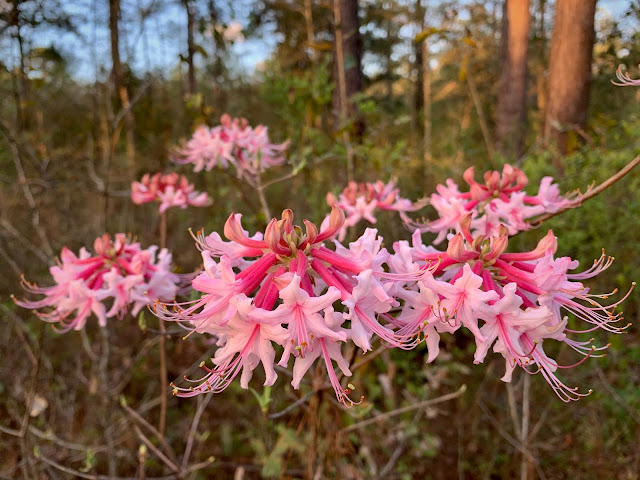Plant Profile: The Sensitive Fern-Bead Fern
 |
| Figure 1: Vegetative and reproductive fronds of Onclea sensibilis; note reproductive bead-like pinnacles and 8 pairs of pinna that make up the green vegetative frond; with photo credit to Kenneth J. Satsma at (http://wisplants.uwsp.edu/scripts/detail.asp?Spcode=ONOSEN) |
Common name: Sensitive Fern- Bead Fern
Scientific name: Onoclea sensibilis
Classification: Kingdom Plantae
Subkingdom: Tracheobionta
Division: Pteridophyta
Class: Filicopsida
Order: Polypodiales
Family: Dryopteridaceae
Genus: Onoclea L.
Species: Onoclea sensibilis L.
Onoclea sensibilis’s name is derived from the Greek root words “ono,” meaning “vessel” and “kleio” denoting “to close,” referring to the ferns reproductive gametes present in the sealed vessel-like beaded pinnacles (Figure 1). The second half of the ferns name sensibilis which is Latin for “sensitive,” is from the plants vulnerability to quickly wither and die at the first sight of frost in the winter. Onoclea sensibilis is found in the southern states of the US such as Florida. The fern is typically associated with swamps, marshes, floodplains, and ditches where the soil is very moist and slightly acidic. The sensitive fern stores water from its surrounding environment in its’ bead-like reproductive structures which makes it better at surviving in drought. Although Onoclea sensibilis is adapted to withstand direct sunlight it prefers to be in partial or full shade.
The sensitive fern is easily identified by its medium to large fronds with wide leaves and visible reproductive fronds. Each mature vegetative frond contains exactly eight pairs of “leaves,” or pinnae (Figure 1). Vegetative are the light green and leathery fronds. The reproductive fronds are produced around August and September; they are usually shorter than the vegetative fronds and brownish in color (Figure 1). The reproductive fronds contain the bead-like pinnacles which are made up of spores. A spore is a reproductive structure that is adapted to maximize dispersal and withstand harsh environmental conditions. During the spring time pinnacle begins to dry out and eventually cracks open unveiling the spores which are dispersed away from the parent plant via wind or water current. These spores enclosed inside of the beaded structures are composed of lipids, or fats, which make them a good source of energy for other animals. Not only can the fern use the stored fats as a food source, but corn earworm and fall armyworm are examples of two organisms that eat these beaded structures for the fats that the spores contain.
Onoclea sensibilis can benefit species such as the fall armyworm, but also be disadvantageous to other organisms too. The sensitive fern has been shown to be a host for the pathogen which causes wilt in rice. Also, parts of the fern are toxic when ingested. On the other hand, there are many advantages that Onoclea sensibilis have on its surrounding environment. Herbalists have claimed that certain species of ferns, including the sensitive fern, help in treating ulcers, intestinal infections, as well as other sicknesses. Ferns are mostly garden plants, but since ferns historically were a part of the dominant terrestrial plants living on Earth, the fossils of these late plants have contributed in large amounts to the formation of our fossil fuels. These fossil fuels include coal, oils, and natural gas that are extremely important to us as humans. Now that you have read about a common Florida native fern and know how to identify it, see if you can find one at your local national parks!
Bibliography:
1. Ensiminger, Peter A. 2011. Ferns- Importance to Humans- Plants, Plant, Species, and Allies. November 1, 2011. [online]. http://science.jrank.org/pages/2689/Ferns Importance-humans.html.
2. Nelson, G. (2000). The ferns of Florida: A reference and field guide (1st ed.). Sarasota, Florida: Pineapple Press, Inc.
3. No Author. 23, January 2010. Onoclea sensibilis (Sensitive Fern). Northwoods. November 1, 2010. [online].https://academics.skidmore.edu/wikis/NorthWoods/index.php/Onoclea_sensib -lis_(Sensitive_Fern)
4. No Author. 2004. About Ferns- Sensitive Fern. November 1, 2010. [online]. http://www.aboutferns.com/sensitive_fern.shtml.
5. Rook, Earl. 26 February, 2004. Onoclea Sensibilis- Sensitive Fern. November 1, 2010. [online]. http://www.rook.org/earl/bwca/nature/ferns/onoclea.html



Comments